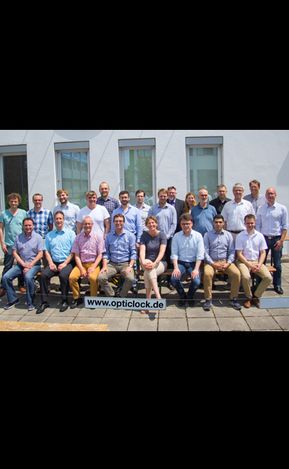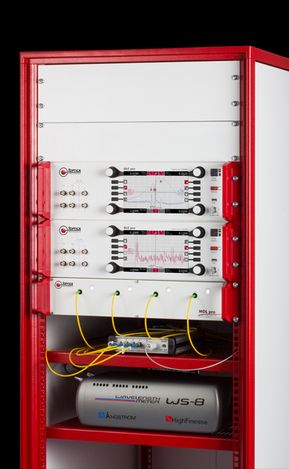German quantum initiative QUTEGA starts with optical single ion clock
The German Federal Ministry of Education and Research (BMBF) has initiated a strategy process within the field of quantum technologies that stressed the importance of this field for economy and science in Germany. This assessment is in accordance with European and international evaluation. In order to implement first results of the strategy process, the BMBF has selected three pilot projects addressing important developments in quantum technologies. The first pilot project “optIclock - optical single ion clock” has started in May 2017.
The goal of the project led by TOPTICA Photonics AG and the Physikalisch Technische Bundesanstalt (PTB) is to realize a demonstrator device for an optical single ion clock within three years. The research consortium – Ferdinand Braun Institute Berlin, High Finesse GmbH, Menlo Systems GmbH, PTB Braunschweig, QUARTIQ GmbH, Qubig GmbH, TOPTICA Photonics AG, University of Bonn, University of Siegen und Vacom GmbH – obtains 4.5 Million Euro BMBF funding. Together with a contribution of 1.5 Million Euro from the participating industrial partners, the total financial volume of the project is 6 Million Euro.
According to the motto „Out of the lab – into the application“, the optIclock project will render the enormous potential of quantum technologies, which are intensely investigated in science-oriented institutes, into something useful beyond academic research. The best experimental clocks in laboratories achieve accuracies of 10-17 to 10-18. Projected onto the age of the universe of 14 Billion years, such clocks would go wrong by only about one second. So far, however, these clocks require permanent intervention of highly trained scientific personal and are operated just for a limited time of typically a few days for dedicated measurement campaigns. The optIclock demonstrator aims at a slightly reduced accuracy by a factor of 10 to 100, still being better than any commercial clock or frequency standard. In contrast to the laboratory solutions, the optIclock will be transportable and non-scientific users can operate it even in an office environment.
Applications of such devices comprise the direct measurement of time via the realization of a highly accurate frequency standard, the precise synchronization of large networks or distributed radio telescopes, navigation in general as well as the improvement of global satellite navigation systems. In particular, one can also deploy it as specialized quantum sensor that can measure gravitational height differences over large distances by frequency comparisons. This promises a variety of applications in geodesy, like changes of the sea level and uplifting/sinking of landmass.
The optIclock device contains a single charged atom that is kept in an electrical trap within an ultra-high vacuum compartment. The atom is laser-cooled to a few Millikelvin (1 Millikelvin = -273.149 °C = -459,668 °F) and a so-called clock laser is stabilized to an optical transition within this atom. In order to make the device useful for general operators, this pilot project will investigate miniaturization, automation as well as integration of individual components and design a comprehensive architecture for the complete system. Many other quantum technology applications – like quantum computing, quantum simulation or quantum sensing – will benefit from the optIclock developments of key technologies and concepts.


